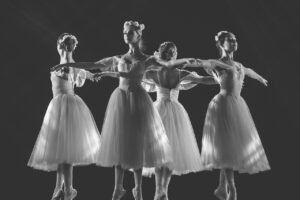Coppelia Ballet: The Great Ballet Comedy
Coppelia Ballet is a comic and sentimental ballet based on a tale by Ernest Theodor Amadeus Hoffmann. The story is about Dr. Coppelius, who creates a life-size dancing doll that the villagers become obsessed with. Franz falls in love with her to the point of abandoning her real love, Swanilda.
Also, character dance and pantomime are key in this ballet. On the other hand, the original choreographer died shortly after the premiere. A year later, it would be premiered in Saint Petersburg with a version by Marius Petipa.
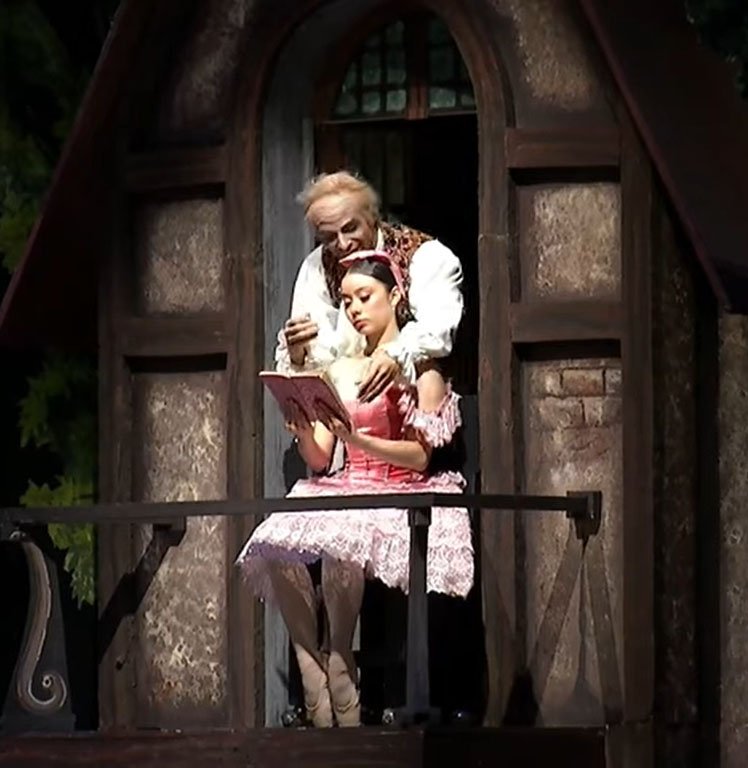
Table of Contents
Essential facts about the ballet Coppelia
- Release date: 1870, Paris Opera
- Composer: Leo Delibes
- Original choreography: Arthur Saint-León
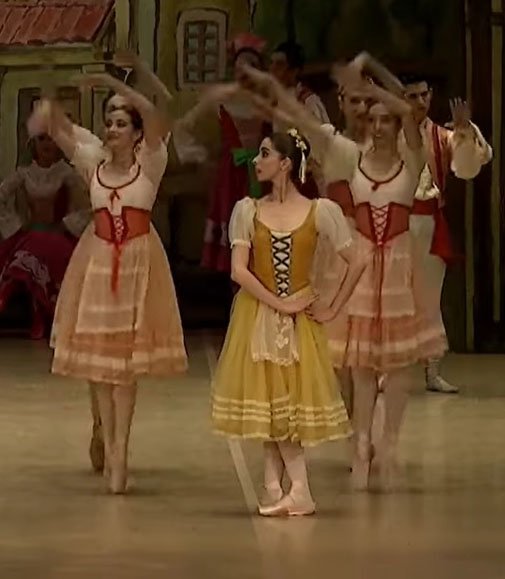
Coppelia Ballet Story
Act One: A Village in Krakow
Swanilda and her boyfriend Franz live in an idyllic village. But he is attracted by the beauty of a young woman who, every afternoon, seems to be reading on the balcony of Doctor Coppelius’s house. This doctor is a mysterious and extravagant old craftsman. Swanilda is jealous and decides to take revenge on her boyfriend. Then, she ridicules him at the village festival. The burgomaster gives each girl an ear of wheat. He tells them if the spike produces a crackling sound in their ear, it will be a sign of true love. Swanilda pretends that the ear she touched does not make any sound. Franz realizes the ruse and invites another girl to dance.
At the end of the party, Doctor Coppelius arrives. And Franz and his friends make fun of him. While trying to free himself from them, Coppelius loses the key to his house. Swanilda finds it and decides to enter the old man’s house to discover who the girl is that captivates her boyfriend. On the other hand, Franz brings a ladder to access the balcony and enter the house.
Second Act: In the house of Doctor Coppelius
Swanilda and her friends enter the house and check everything until they find what they seek. The rival is Coppelia, a life-size doll. When the inventor returns to his house, Swanilda’s friends escape. But Swanilda cannot do it. So, she dresses up in Coppelia’s clothes to impersonate her.
On the other hand, Franz manages to enter through the window. And he is willing to declare his love for the young woman on the balcony. Coppelius takes advantage of Franz’s naivety to achieve his goal: to give life to Coppelia. Then, he gives a potion to Franz that puts him to sleep. So, the doctor seeks to transfer all his life’s energy to Coppelia.
Swanilda then introduces herself as the Coppelia doll. But she replaces her mechanical movements with a graceful dance. Coppelius feels happy because he believes he has managed to bring his favourite doll to life. But tired of the charade and worried about Franz, Swanilda reveals her true identity to Coppelius. With some malice, Swanilda breaks the dolls created by the inventor. Franz wakes up, recognizes her ridiculous behaviour and asks Swanilda for forgiveness. The young couple flees, leaving a heartbroken Coppelius, hugging the battered remains of his favourite doll.
Third Act: Village Square
A big party is held in the town to celebrate the wedding of Franz and Swanilda. Coppelius appears in the middle of the dances. Regretful for the harm they caused her, the couple decide to donate his dowry to alleviate the damage caused. The burgomaster refuses and offers Coppelius a bag of gold coins. Everyone ends up happy, celebrating love, life and friendship.
Is Coppelia a comedy?
In his book “101 Stories of Great Ballets,” George Balanchine wrote: “Just as Giselle is the great tragedy of ballet, Coppelia is its great comedy. Both are love stories. And both have roots in real life and fantasy. In Giselle, some spirits test the hero’s love for the heroine. In Coppelia, there is another romantic device by which the heroine secures her lover’s devotion. Giselle’s hero can only find her lost love in a fantastic world since his beloved has disappeared from reality. In Coppelia, the beautiful inanimate doll leads the hero to her true love, and the ending is happy. These contrasts that Balanchine points out also reveal the different periods in which both ballets were created.
Is Coppelia a romantic ballet?
Coppelia was created at the end of romanticism. At that time, pure romantic themes began disappearing from the repertoire. Let us remember that romanticism was a movement that influenced literature, music and painting during part of the 18th and 19th centuries. Some typical features of romanticism are the existence of a realistic world that is opposed to a fantastic world populated by otherworldly beings. On the other hand, it places the idealized figure of women at the centre of the work. And it shows love as something destined for misfortune. A typical example is Giselle Ballet (1842), created during the Romantic period.
What country does Coppelia take place in?
In a village in Central Europe, in an undetermined time, live young Franz and his love Swanilda. Coppelius, an old inventor who carries out mysterious experiments in a gloomy mansion, also lives there.
This village has influences from various ethnicities and their folklore: Hungarians, Poles, Ukrainians and Gypsies, which manages to create a lively, festive, colourful, and joyful spectacle.

Is Coppelia a fairytale?
Coppélia is based on “The Sandman”, a sinister story by ETA Hoffmann. The libretto preserved some elements: the automaton, the name of Coppelius and the deception suffered by the protagonist. But ballet stripped it of its dark character.
Who was Coppelia ballet composer
The ballet had two equally important creators. Arthur de Saint-Léon did the choreography and Léo Delibes composed the music. The collaboration between the two was so close. So, this unintentionally served as a model for the stormy bond between Marius Petipa and Tchaikovsky.
Arthur Saint-Léon (1821-1870) had had rigorous training as a violinist and dancer since childhood. He was a brilliant performer and successful choreographer since his first ballets, which he created at a very young age. For ten years he divided his work between Paris and Saint Petersburg. But in 1863 he signed a stable contract with the Paris Opera. Thanks to his musical training, Saint Léon was aware of the importance of music in dance work. At this time, ballet music was highly devalued. Many considered it lower than other types of music. But Saint Leon implemented a new way of working with Delibes. On the one hand, the music and choreography seem modelled on each other. But at the same time, music retains its intrinsic values as an independent entity.
Leo Delibes (1836-1891) collaborated with Saint Leon for the first time in 1866, composing part of the work “La Source”. At that time, Delibes was 30 years old and working as an accompanist pianist at the Paris Opera. In his free time, he was an organist in a church and composed operettas. But the music he composed for La Source was so joyful and danceable that the Opera management entrusted him with the scores for two complete works. First of all, Coppelia. And after a while, Sylvia. According to Tchaikovsky, “Swan Lake is rubbish compared to Sylvia.”
Coppelia Ballet History
The assembly of Coppélia took a long time. Finding the right dancer to play Swanilda was so daunting. Finally, the director of the Paris Opera decided on Giussepina Bozzachi. This dancer was born in Milan. Giussepina had surprising natural conditions. So, when she was eleven, her family took her to Paris to train with the famous teacher Madame Dominique. When she played the role of Swanilda, she was only fifteen years old. Coppelia’s collaborators were soon convinced that they had found the ideal interpreter in Giussepina.
The work premiered on May 25, 1870. And the public’s response exceeded all expectations. As was customary at that time, a transvestite dancer played the role of Franz. This custom continued until the 20th century.
Coppelia’s incredible success had a sad end. On the one hand, Sain Léon died suddenly three months after the debut of her masterpiece. On the other hand, the Franco-Prussian War broke out in July of that same year. Then, the Opera had to close after only twenty performances. And Giussepina never danced again because she was affected by smallpox, dying on her seventeenth birthday.
From then on, Coppelia maintained the same popularity. Today, it is part of the repertoire of all the major ballet companies in its different versions.
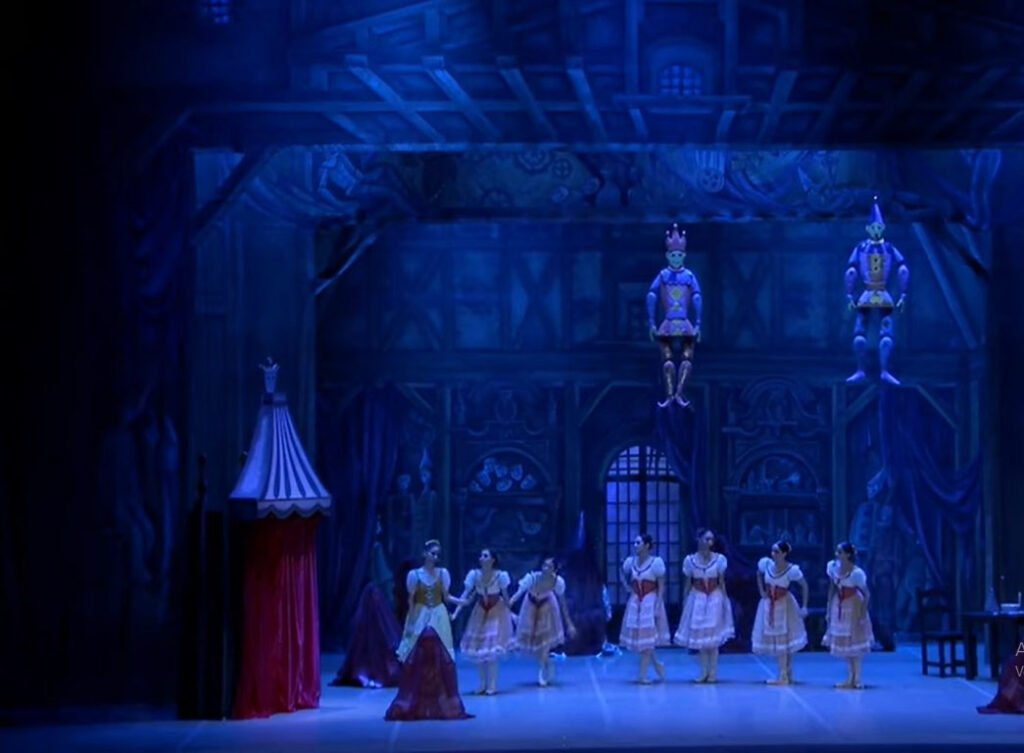
Is Coppelia ballet suitable for children?
Yes, Coppélia can be suitable for children, depending on their age and interests. Coppélia is a comedic ballet with lively music and colourful characters. So, this can be entertaining for children. However, parents should be aware that some versions involve themes of deception and mistaken identity. This may need explanation or may be better suited for older children. Also, like many ballets, Coppélia features classical ballet techniques and will be more appreciated by children who like dance or theatre. In short, it can be a delightful experience for families to enjoy together, but parents may want to consider the specific production and their child’s age and sensitivity before attending.
How long is Coppelia Ballet?
The length of Coppélia can vary depending on the specific production. Typically, a full-length performance of Coppélia can range from two to two and a half hours, including intermissions. However, some productions may be slightly shorter or longer depending on factors such as pacing, additional scenes, or variations in choreography. It’s always a good idea to check the details of the specific performance you plan to attend for the most accurate information on running time.
The mazurka at Coppelia Ballet
Coppélia was the first classical ballet to include folk dances such as czardas, mazurkas and polkas, giving local colour and realism to the action.
But what is a mazurka? The name “Mazurka” comes from the Mazovia region in Poland, where this dance originated. The origin of the Mazurka dates back to the 18th century in Poland, where it became a national dance and a symbol of Polish resistance. The Mazurka is characterized by its unmistakable rhythm, with a 3/4 time signature and a strong accent on the second beat, which gives it a unique and energetic character.
Over the years, the Mazurka has spread throughout Europe and beyond, gaining popularity in high society. It was especially appreciated in 19th-century France, where composers such as Frédéric Chopin incorporated elements of the Mazurka into their music. This dance also influenced folk music and dance in other European countries, such as Russia.
The distinctive rhythm of the Mazurka is one of its highlights. The 3/4 time signature with an accent on the second beat creates an exciting rhythmic pattern that invites action. Mazurka music is often characterized by strong, melodic chords that reinforce the feeling of energetic dancing.
Dancing the Mazurka requires skill and coordination. Dancers often form pairs and perform graceful movements, such as short steps and spins, to the beat of music. The movements may vary depending on the region and style, but elegance and passion are constant elements in the Mazurka dance.
How long is Coppelia Ballet?
The length of Coppélia can vary depending on the specific production and the interpretation of the choreographer. Typically, a full-length performance of Coppélia can range from two to two and a half hours, including intermissions. However, some productions may be slightly shorter or longer depending on factors such as pacing, additional scenes, or variations in choreography. It’s always a good idea to check the details of the specific performance you plan to attend for the most accurate information on running time.
Buy Coppelia Ballet DVD / Blu-Ray
Royal Opera House: Acosta – Benjamin
Buy on Amazon USA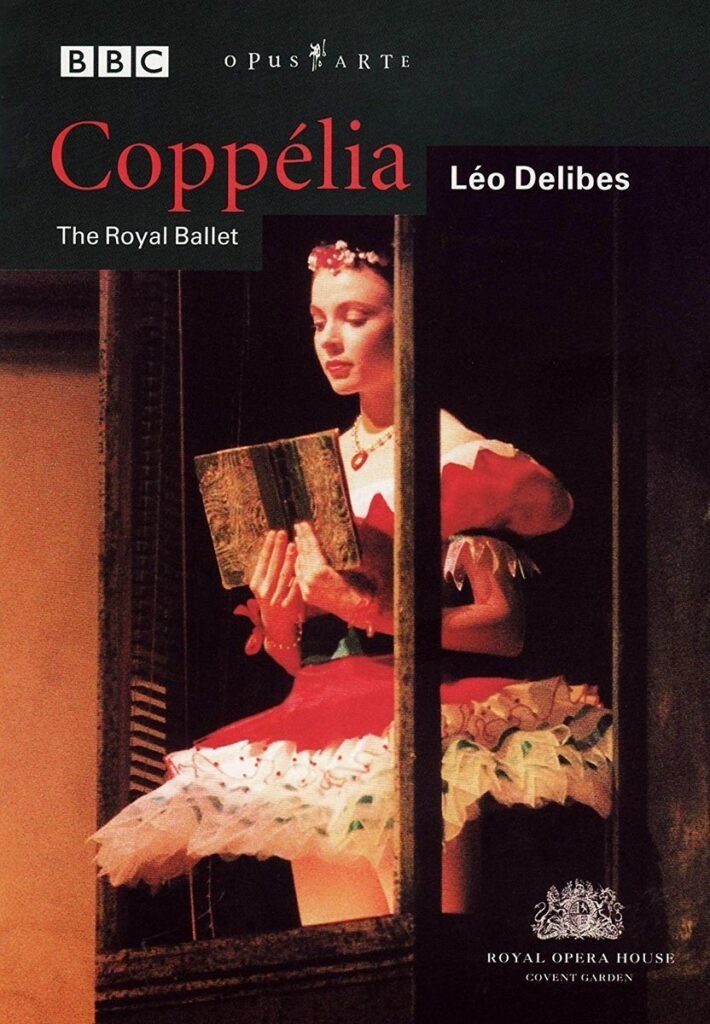
Cast
- Leanne Benjamin (Swanilda)
- Carlos Acosta (Franz)
- Luke Heydon (Doctor Coppélius)
- Leana Palmer (Coppélia)
- The Orchestra of the Royal Opera House; Nicolae Moldaveano
Production
- Company: The Royal Ballet
- Choreographer: Dame Ninette de Valoise
Disc Information
- Catalogue Number: OA0824D
- Date of Performance: 2000
- Running Time: 120 minutes
- Sound: Dolby Surround; Dolby Stereo
- Aspect Ratio: 16:9 Anamorphic
- Subtitles: EN, DE, FR
- Label: Opus Arte
Royal Opera House: Nuñez – Muntagirov
Buy on Amazon USA
Cast
- Marianela Nuñez (Swanilda)
- Vadim Muntagirov (Franz)
- Gary Avis (Doctor Coppélius)
- Ashley Dean (Coppélia)
- The Orchestra of the Royal Opera House; Barry Wordsworth
Production
- Company: The Royal Ballet
- Choreographer: Dame Ninette de Valoise
Disc Information
- Product Dimensions : 7.52 x 5.31 x 0.59 inches; 2.22 ounces
- Media Format : NTSC
- Release date : October 23, 2020
- Dubbed: : None
- Subtitles: : English, Japanese, French, Korean
- Studio : BBC / Opus Arte
- ASIN : B08GLQXN72

